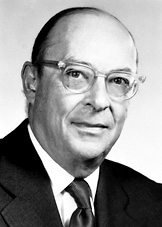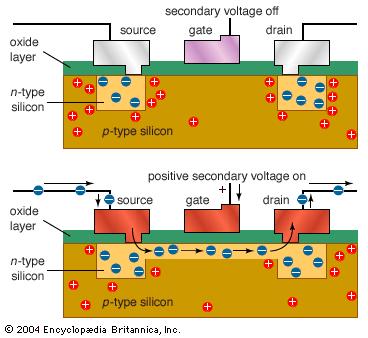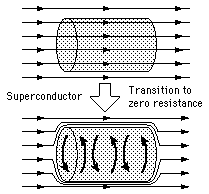John Bardeen
Claimed by Alexis Jacob (ajacob30) 12/2/2015
John Bardeen (May 23, 1908-Jan 30, 1991) was an American physicist who was cowinner of the Nobel Prize for physics in 1956 and 1972 [1]. The 1956 Nobel Prize was for the joint invention of the transistor with William B. Shockley and Walter H. Brattain. The 1972 Nobel Prize was for developing the theory of superconductivity with Leon N. Cooper and John R. Schrieffer [2].
University Education and Career
Bardeen earned his bachelor's and master's in electrical engineering at the University of Wisconsin, Madison. He received his doctorate in mathermatical physics from Princeton University in 1936. He later became a staff member at eh University of Minnesota, Minneapolis from 1938 to 1941. During World War II, he served as principal physicist at the U.S. Naval Ordinance Laboratory in Washington, D.C. From 1951 to 1975, Bardeen served as a professor of electrical engineering and physics at the University of Illinois, Urbana-Champaign [3].
Scientific Contribution
In 1945, Bardeen joined Bell Laboratories where he researched the electron-conducting properties of semiconductors with his colleagues, Brattain and Shockley. Together on Dec. 23, 1947, they began the electronic revolution with the creation of the transistor. This device allowed computers to be manufactured with smaller and more accessible parts [4]. In the early 1950s, Bardeen continued research on superconductivity at near absolute temperatures. He created the BCS theory, with Cooper and Schrieffer, to explain the disappearance of electrical resistance in materials near such extreme temperatures [5].
Transistor
A transistor is a semiconductor that amplifies, controls, and generates electrical signals. It is made up of integrated circuits called microchips. Its small size, low heat generation, and power efficiency made it the foundation of the Information Age. The three leads in a transistor are the emitter, collector, and the base which in modern appliances are known as the source, drain, and gate. The electrical signal applied at the base influences the semiconductor's ability to conduct current. The current then flows between the emitter and collector. The rate of flow of current is determined by the input signal at the gate [6].
Bardeen-Cooper-Schrieffer Theory (BCS Theory)
BCS theory is a comprehensive theory that explains the behavior of superconducting materials; they lost resistance to the flow of electric current when cooled to temperatures near zero. Superconductors form when electrons in pairs, called Cooper pairs, in a material all have correlated motion. After applying voltage and removing the voltage, the current continues flowing because the electron pairs encounter no opposition. When Cooper pairs are warmed, the pairs separate from their correlated motions into individual electrons and the material becomes non-superconducting. The theory supplies experimental means of measuring the energy needed to separate Cooper pairs [7].
See also
Liquid Nitrogen Experiments: The Superconductor (Video) https://www.youtube.com/watch?v=o6t2IWHA63o
References
http://www.britannica.com/biography/John-Bardeen
http://www.nobelprize.org/nobel_prizes/physics/laureates/1972/bardeen.jpg
http://www.nobelprize.org/nobel_prizes/physics/laureates/1972/bardeen-bio.html
http://www.britannica.com/technology/transistor
http://www.britannica.com/science/BCS-theory
http://hyperphysics.phy-astr.gsu.edu/hbase/solids/imgsol/meis2.gif


